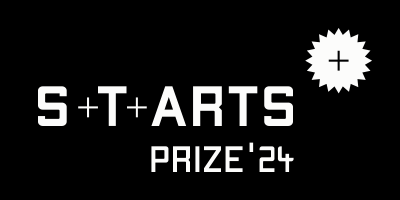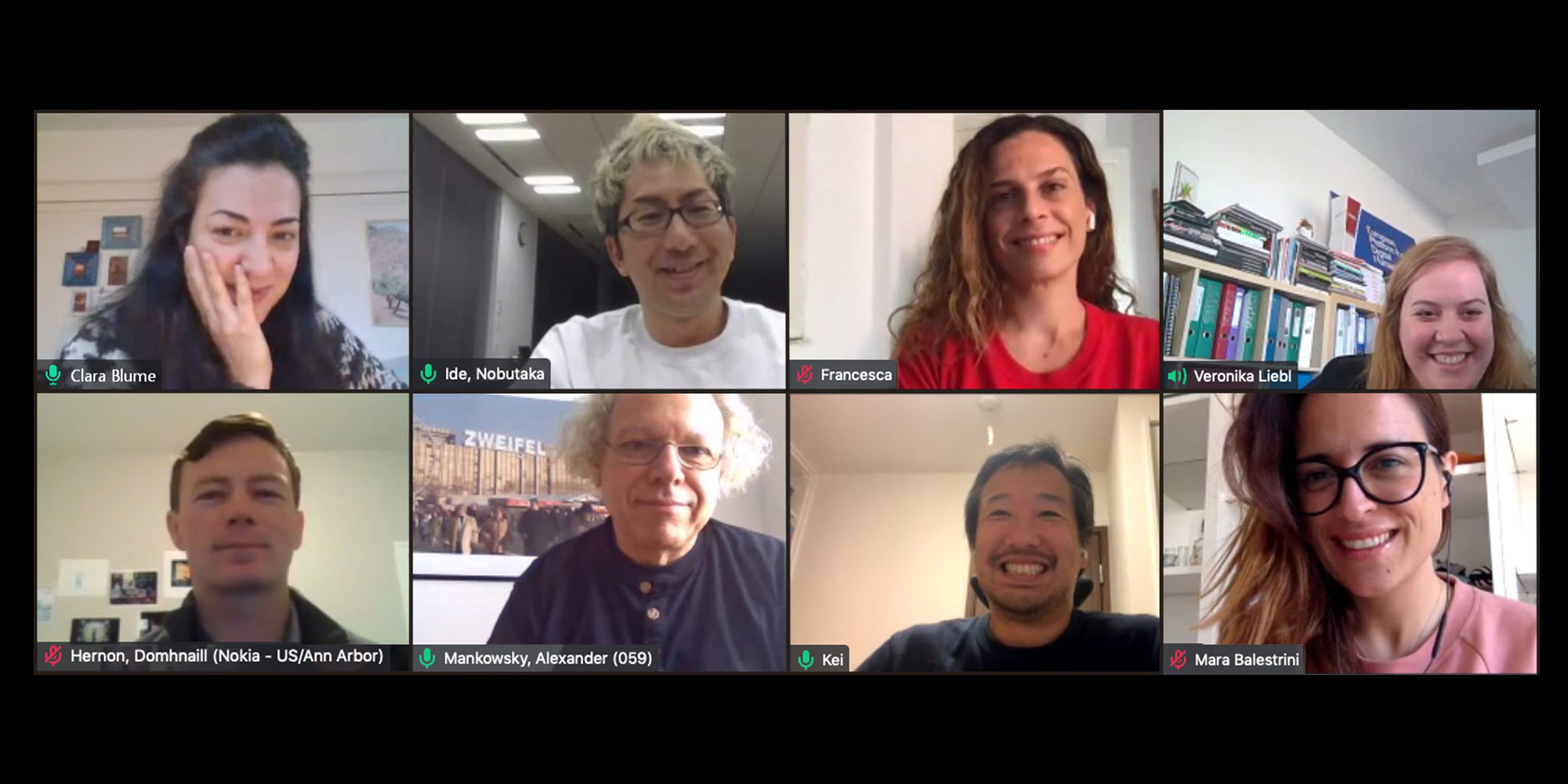S+T+ARTS Prize Jury 2020
Alle Einreichungen werden von einer Jury bewertet, die zwei Sieger*innenprojekte und bis zu 10 Anerkennungen auswählt.

Mara Balestrini (IT) ist Forscherin im Bereich Human Computer Interaction (HCI) und Technologiestrategin. Derzeit ist sie CEO der Innovationsagentur Ideas for Change und Mitbegründerin von SalusCoop, der ersten spanischen Kooperative für Gesundheitsdaten. Maras Arbeit bewegt sich an der Schnittstelle zwischen zivilgesellschaftlicher Technologie, Design und Aktionsforschung. Sie hat über 30 Publikationen zu diesen Themen verfasst und Projekte wie Making Sense EU, Bristol Approach und #DataFutures koordiniert. Mara hat am Intel Collaborative Research Institute on Sustainable Connected Cities am University College London in Informatik promoviert. Ihre Arbeit wurde u.a. beim ACM CHI, ACM CSCW und Ars Electronica ausgezeichnet und in internationalen Medien wie der BBC, The Guardian, The Financial Times und El País veröffentlicht.

Domhnaill Hernon (IE) ist eine preisgekrönte Führungskraft für Technologie, Innovation und Kreativität. Vordiplom in Luftfahrttechnik und einen Doktortitel in Aerodynamik von der Universität Limerick und einen Executive MBA von der Dublin City University, Irland. Zuvor leitete er F&E-Organisationen und entwickelte Strategien zur Überwindung des „Innovation valley of death“ aus. Er ist Leiter von Experiments in Art and Technology (E.A.T.), einer neuen Initiative, die er gegründet hat, um Kunst mit Technik und den Wissenschaften zu verschmelzen und Lösungen für die Humanisierung der Technologie zu entwickeln. Domhnaills Arbeit wurde unter anderem im Wired Magazine, Times Square, SXSW, Nasdaq, MWC und Inspirefest vorgestellt, und er berät Kulturprogramme weltweit.
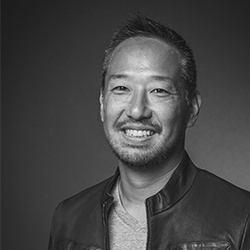
Kei Shimada (JP/US) ist ein japanisch-amerikanischer Unternehmer, Angel Investor und derzeit Leiter des Digital Makers Lab bei IBM Japan. Außerdem berät er Unternehmen bei der digitalen Transformation. Kei’s Stärke liegt in der Identifizierung und Lösung komplexer Probleme. Einer seiner Schwerpunktbereiche ist das Krisenmanagement und die Kommunikation, was ihn dazu veranlasst hat, Japans erste umfassende nationale Datenbank für Evakuierungsunterkünfte zu erstellen, die de facto zu einer der wichtigsten Datenbanken des Landes geworden ist. Seine andere Stärke liegt in der kreativen Umsetzung, zuletzt leitete er ein Team, das 2019 das weltweit erste klassische KI-Konzert bei der Ars Electronica produzierte. Kei ist einer der aktivsten Vortragenden Japans, der bereits in über 20 Ländern Vorträge und moderierte Panels gehalten hat.
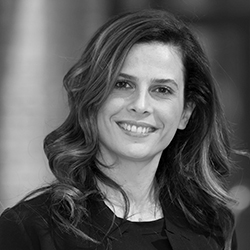
Francesca Bria (IT) ist die Präsidentin des Nationalen Innovationsfonds Italiens und Ehrenprofessorin des Instituts für Innovation und öffentliche Zwecke an der UCL in London. Sie ist Senior-Beraterin der Vereinten Nationen (UN-Habitat) für digitale Städte und digitale Rechte. Francesca Bria leitet das DECODE-Projekt zur Datenhoheit in Europa und ist Mitglied der hochrangigen Expertengruppe der Europäischen Kommission zu den wirtschaftlichen und gesellschaftlichen Auswirkungen von Forschung und Innovation (ESIR). Francesca hat einen Doktortitel in Innovation und Unternehmertum vom Imperial College, London, und einen MSc in digitaler Wirtschaft von der Universität London, Birbeck. Sie lehrte an mehreren Universitäten in Großbritannien und Italien und beriet Regierungen, öffentliche und private Organisationen.
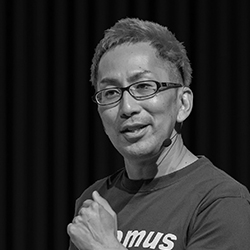
Nobu Ide (JP) begann seine Karriere 1995 bei der Sharp Corporation, wo er 18 Jahre lang tätig war. Er kam 2013 als General Manager für Technologie-Marketing zu Wacom, um die Führungsposition von Wacom bei digitalen Stiften zu festigen. Im Jahr 2015 wurde er zum SVP befördert, der den Geschäftsbereich Technology Solution des Unternehmens leitete, und 2017 zum Executive Director. Nobu Ide hat die Zusammenarbeit mit wichtigen Industriepartnern auf der ganzen Welt vorangetrieben. Im April 2018 übernahm er die Rolle des Representative Director, President & CEO.

Alexander Mankowsky (DE), 1957 in Berlin geboren, studierte Sozialwissenschaft, Philosophie und Psychologie an der Freien Universität Berlin. 1989 begann er seine Tätigkeit im Forschungsinstitut von Daimler in Berlin. Der multidisziplinäre Zugang am Institut vereinte eine Fülle von Disziplinen, von Sozialwissenschaften bis zu künstlicher Intelligenz. Seine aktuellen Arbeitsthemen sind Zukunftsstudien, die sich mit der sich ständig ändernden Kultur der Mobilität, der gegenseitigen Abhängigkeit von sozialer und technologischer Innovation und anderen Aspekten in Verbindung mit möglichen Wegen in die Zukunft befassen.

Clara Blume (AT), PhD, ist stellvertretende Direktorin und Leiterin der Abteilung Kunst, Wissenschaft und Technologie bei Open Austria, dem österreichischen Konsulat und Innovationsbüro im Silicon Valley. Sie kuratiert und fördert künstlerische Projekte an der Schnittstelle von Kunst + Technologie und schlägt gleichzeitig eine Brücke zwischen Österreich und dem Innovations-Ökosystem in der SF Bay Area. Zuvor arbeitete sie als professionelle Musikerin, Songwriterin und international tourende Künstlerin. Blume hat einen akademischen Hintergrund in den Bereichen bildende Kunst, Komposition, vergleichende Literaturwissenschaft, Kulturwissenschaften und Geschichte. Sie hält regelmäßig Vorträge auf Konferenzen und publiziert als Autorin.
S+T+ARTS Prize Advisors 2020
Die Advisors sind renommierte, internationale Berater*innen mit Expertise auf diesem Gebiet. Sie empfehlen Projekte und ermutigen ein breites Spektrum an möglichen Teilnehmer*innen zur Einreichung. Darüber hinaus achten sie auf Ausgewogenheit hinsichtlich Geschlecht und geografischer Herkunft der Teilnehmer*innen.
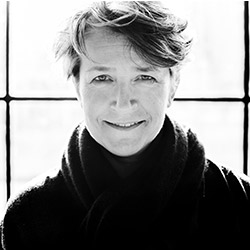
Angelique Spaninks (NL) Durch die Kombination von Journalismus, Kritik und Kuratieren hat Angelique Spaninks eine interdisziplinäre Praxis an der Schwelle zwischen zeitgenössischer Kunst, Design, digitaler Kultur und Biokunst & Design entwickelt. Seit 2005 leitet sie als Direktorin und Kuratorin das MU Hybrid Art House, eines der führenden Institute für zeitgenössische Kunst in den Niederlanden mit einem dezidiert multidisziplinären Programm. Im Laufe der Jahre war sie Mitglied vieler Kulturausschüsse, Think Tanks und Kommissionen, um die Weiterentwicklung der kulturübergreifenden Praxis und Politik in den Niederlanden und im Ausland zu unterstützen.
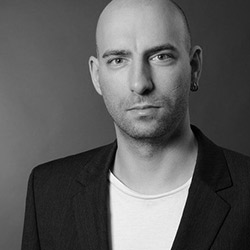
Manuel Kretzer (DE) ist Professor für Material und Technologie am Fachbereich Design der Anhalt Universität in Dessau. Seine Forschung zielt auf die Schaffung dynamischer und adaptiver Objekte mit einem besonderen Schwerpunkt auf neuen intelligenten und biologischen Materialeigenschaften und deren Kombination mit fortschrittlichen digitalen Design- und Fertigungswerkzeugen. Im Jahr 2012 initiierte er Materialiability, eine kostenlose Bildungsplattform, die versucht, Architekten, Designer und Künstler miteinander zu verbinden und Zugang zu neuen Materialentwicklungen und Technologien zu bieten.

Achim Menges (DE) ist Architekt in Frankfurt und Professor an der Universität Stuttgart, wo er Gründungsdirektor des Instituts für Computational Design and Construction (ICD) und Direktor des Exzellenzclusters Integrative Computational Design and Construction for Architecture (IntCDC) ist. Der Schwerpunkt von Menges Praxis und Forschung liegt in der Entwicklung des integrativen Designs an der Schnittstelle von rechnergestützten Entwurfsmethoden, robotergestützter Fertigung und Konstruktion sowie fortschrittlichen Material- und Bausystemen. Seine Projekte und Designforschungen haben viele internationale Auszeichnungen erhalten, wurden weltweit veröffentlicht und ausgestellt und sind Teil mehrerer renommierter Museumssammlungen.
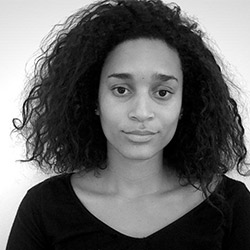
Amanda Masha Caminals (ES) ist Co-Direktorin und Kuratorin des Mutant Institute of Environmental Narratives (IMNA), dem Laboratorium von Matadero Madrid, das künstlerische Praktiken in Verbindung mit Journalismus, Wissenschaft und Technologie als Antwort auf die Herausforderungen der Klimakrise fördert. Zuvor leitete sie die CITY STATION der Environmental Health Clinic der Künstlerin Natalie Jeremijenko im Centre for Contemporary Culture of Barcelona (CCCB). Sie ist Gründerin der Organisation Translocalia, einem Netzwerk von Künstlern, Kuratoren und Designern, die durch Kunst für die Zukunft planen. Sie hat einen BA in Geisteswissenschaften, einen Abschluss in Kunstgeschichte und einen MA Hons in der Kuratierung zeitgenössischer Kunst des Royal College of Art in London.
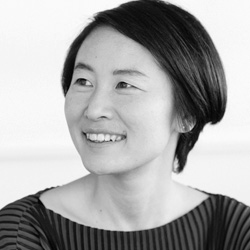
Chiaki Hayashi (JP) ist Gründerin und derzeit stellvertretende Direktorin von Loftwork Inc. Loftwork gelingt es jährlich über 600 Projekte umzusetzen. Chiaki Hayashi managt den Bereich Operations der Kreativplattform Loftwork.com, bei der über 25 000 Kreative registriert sind, und das FabCafe, ein Café mit digitalen Fabrikationstools sowie ein Material-zentrierter Co-working space MTRL. Sie ist Assistentin des MIT Media Lab Direktors. Chiaki Hayashi hat zuletzt „Hidakuma“ gegründet, mit dem Ziel die Natur und lokale Kreativität wiederzubeleben.
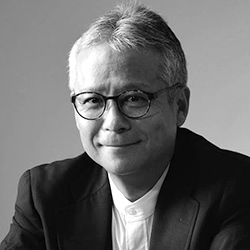
Hiroshi Ishii (JP/US) ist Jerome B. Wiesner Professor für Medienkunst und -wissenschaften am MIT Media Lab. Er kam 1995 zum Medienlabor und gründete die Tangible Media Group, um digitale Inhalte greifbar zu machen, indem er digitalen Informationen und Berechnungen physische und dynamische Formen gab. Hier verfolgt er seine Visionen von „Tangible Bits“ (1997) und „Radical Atoms“ (2012), die das gegenwärtige dominante Paradigma der Mensch-Computer-Interaktion überwinden werden: „Painted Bits“ von grafischen Benutzeroberflächen. Für seine visionäre Arbeit bei HCI wurde er 2001 vom MIT mit einer Professur auf Lebenszeit und 2019 mit dem SIGCHI Lifetime Research Award ausgezeichnet.
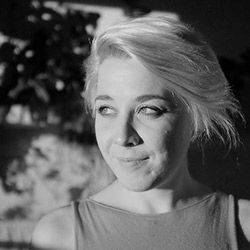
Helene Steiner (AT) ist Designerin und Ingenieurin, und arbeitet an der Schnittstelle zwischen Technik und Wissenschaft. Sie war Mitbegründerin von Open Cell mit dem Ziel, erschwingliche Laborflächen für junge Start-ups bereitzustellen, die an der Schnittstelle zwischen Design und Biologie innovativ tätig sind. Sie leitet die Plattform für Biomaterialien in der Modeabteilung des Royal College of Art. Zuvor war sie als Postdoc-Forscherin bei Microsoft Research Cambridge und als research fellow in der Tangible Research-Gruppe des MIT Media Lab tätig. Sie hat einen MDes der Bauhaus-Universität, einen MA des Royal College of Art und einen MSc des Imperial College London.
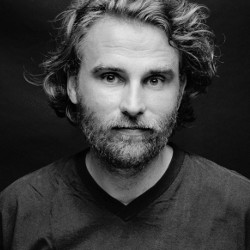
Bastian Schäfer (DE), geboren 1980, ist ein Querdenker, Kitesurfer, TED-Sprecher, Vater eines Jungen und eines Mädchens und Fahrzeug-Ingenieur. Nachdem er bei Volkswagen Design gearbeitet hat, ist er 2006 zu Airbus gewechselt und war in verschiedene Projekte für A340, A350 und A380 involviert. 2009 hat er sich dem Projektteam der preisgekrönten Airbus Concept Cabin mit seiner bionischen Struktur angeschlossen. Als Projektleiter des Bionic Partition Projekts legt er den Fokus auf generatives Design in Kombination mit 3D-Druck-Technologie.

Christiane Luible-Bär (AT) ist Co-Leiterin der Abteilung Fashion & Technology an der Universität für Kunst und Design Linz. Ihr Hauptinteresse gilt der praxisorientierten Designforschung für den Bereich Modedesign. Dabei konzentriert sie sich auf die 3D-Modellierung und virtuelle Simulation von Mode und den Einfluss digitaler Medien auf den Prozess des Modedesigns. Sie erhielt mehrere internationale Designpreise, darunter den Lucky Strike Junior Design Award. Sie arbeitete an großen europäischen Bekleidungsforschungsprojekten mit und ist heute verantwortlich für die Durchführung mehrerer Forschungsprojekte zu Mode und Technologie.
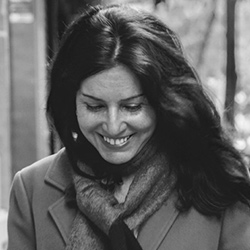
Isabel Berz (ES) ist Leiterin von IED REC, dem Forschungs- und Bildungszentrum am Istituto Europeo di Design, Spanien. Als Modedesignerin, Forscherin und Pädagogin gründete Isabel 1990 ihr eigenes Modelabel. Im Jahr 2004 wurde sie zur Direktorin der Modeschule am IED Madrid ernannt, und im Jahr 2016 gründete sie das IED REC, Research and Education Center in Madrid als Inkubator der Forschung an der Schnittstelle von Mode, Design, Handwerk und Technologie. IED REC erstellt Forschungsprogramme wie das IED CoDesign Project Las Manuelas, die IED Craft Platform und ist Partner des EU Cosme Worth Partnership Project und des EU Horizon 2020 Re-Frame Project.
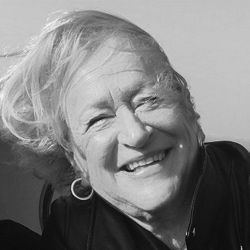
Beatrice de Gelder (NL) ist Professorin für Kognitive Neurowissenschaften an der Fakultät für Psychologie und Neurowissenschaften der Universität Maastricht, Niederlande, und Mitglied des Maastricht Brain Imaging Centre (M-BIC). Vor ihren derzeitigen Aufgaben war sie Senior Scientist am Martinos Center for Biomedical Imaging der Harvard University. Sie erhielt einen MA in Philosophie, einen MA in Experimenteller Psychologie und einen PhD in Philosophie von der Louvain University in Belgien. Ihre aktuellen Forschungsschwerpunkte liegen in der Gesichts- und Körpererkennung und seit kurzem in der Neurowissenschaft der Kunst.
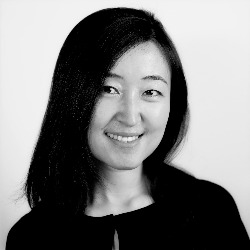
Lining Yao (CN) ist Assistenzprofessorin am Human-Computer Interaction Institute (HCII) der Carnegie Mellon University, School of Computer Science, und leitet dort das Morphing Matter Lab. Das Morphing Matter Lab entwickelt Materialien, Werkzeuge und Anwendungen von adaptiven, dynamischen und intelligenten Morphing-Materialien. Iher Forschung kombiniert Materialwissenschaft, rechnergestützte Fertigung, kreative Kunst und Designpraktiken. Das Labor arbeitet antidisziplinär und publiziert in den Zwischenbereichen von Wissenschaft, Technik, Design und Kunst. Lining promovierte 2017 am MIT Media Lab.
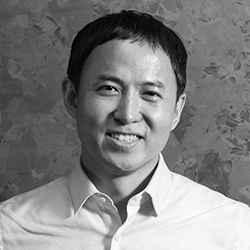
Daehyung Lee (KR) ist der Direktor von Hzone. Derzeit arbeitet er als Art Director von CONNECT, BTS, einer globalen Initiative, die in Zusammenarbeit mit Kuratoren aus fünf großen Städten entwickelt wurde – London (Serpentine Galleries), Berlin (Martin Gropius Bau), Buenos Aires (CCK), Seoul (DDP) und New York (Brooklyn Bridge Park). Er war sechs Jahre lang der künstlerische Leiter der Hyundai Motor Company, die die Tate, LACMA, MMCA, Bloomberg und den Blue Prize miteinander verband. Er kuratierte „Counterbalance“: The Stone and the Mountain“ im koreanischen Pavillon, La Biennale di Venezia 2017. Außerdem war er künstlerischer Berater des Korea Research Fellow 2018~2020, des interdisziplinären Spielplatzes ZER01NE (2018), der Busan Biennale (2014) und der Cheongju Craft Biennale (2013). Seit 2018 ist er Mitglied der Jury für den STARTS-Preis des Ars Electronica Festivals. Er hat einen MA in Curatorial Studies von der Columbia University in New York und kuratierte 2009 die Korean Eye Moon Generation und ihre Nomadenausstellung bis 2012 in der Saatchi Gallery in London.
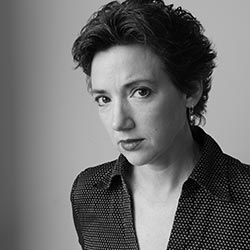
Naomi Kaempfer (BE) studierte Jura und Philosophie und erwarb einen Bachelor in Produkttechnik und einen MSc in Designmanagement. Sie spezialisierte sich auf die Vermittlung von Geschäftsstrategien an internationale Design- und Kreativmärkte, wobei sie u.a. Lösungen aus dem Produktdesign in nicht standardisierte Architektur umsetzte. Nachdem sie mit ONL an der Ausstellung für die NSA in Pompidou gearbeitet hatte, wurde sie gebeten, die Design- und Kunstplattform für die Produktion zu gründen, was 2003 ein Novum auf dem Verbrauchermarkt darstellte. Diese Plattform wurde die renommierte *.MGX für Materialise und die Basis für ‚i.materialise‘. Kaempfer leitete diese Abteilung 7 Jahre lang. Von 2008-2011 leitete er als Chair Professor „the LAB“ die Technologie-Abteilung der Design-Akademie, die damals von Lidewij Edelkoort geleitet wurde. Zwischen 2010-2013 leitete Kaempfer als Designstrategieexperte die strategische Designentwicklung der Delhaize-Gruppe und arbeitete als unabhängiger Berater für 3D-Druckunternehmen und aufstrebende Designplattformen.
Reimagining Growth and Decay: Artistic Research in Service of the Circular Economy
Statement of the S+T+ARTS Prize ’20 Jury (Mara Balestrini, Clara Blume, Francesca Bria, Domhnaill Hernon, Nobu Ide, Alexander Mankowsky, Kei Shimada)
From the total of 1,775 entries, 858 projects were directly submitted to S+T+ARTS Prize ’20. For the first time in the history of the S+T+ARTS Prize, the jury wasn’t able to physically gather in Linz for its official jury meeting. In the context of the global COVID-19 health crisis, all travel was suspended, necessitating the first ever virtual jury meeting on May 1-3, 2020. Over the course of three days, the group of 7 members from three continents joined an online discussion; some started the session bright and early with the Californian sunrise while jury members in Tokyo wrapped up the meeting after midnight. A virtual jury process has the distinct advantage of helping to save the environment, time, and travel costs. However, the lack of physical proximity, missed opportunities for casual conversations among peers, and reduced downtime for reflection stripped our verbal exchanges down to their essential bits and pieces. The jury thus emphasized the necessity of physical interaction for in-depth discussions that allow for a thorough evaluation process by addressing a variety of questions that arose during the sessions.
The diversity among this year’s jury members highlighted how cultural prerogatives construct different relations with and perceptions of art and technology. This realization led to a series of spirited debates around the value of art in today’s societies, the nuanced distinction between art and design, and the broad range of contrasting evaluation criteria that on occasion complicated finding a consensus. Another critical point of discussion formed around the inherent difficulty to compare submissions by multi-institutional collaborative projects with DIY homemade installations by individual artists. The former have access to vast financial, material, and logistical means, which may warp the jury’s expectations when contrasted with the latter’s struggle with limited resources; perhaps the future implementation of certain ‘weight classes’ during the submission process could help solve this dilemma.
Lastly, this year’s submissions were overshadowed by the gravitas of the global pandemic and its devastating long-term economic and societal repercussions. Due to the untimely call for this year’s applications, none of the submitted projects was in a position to address the current crisis. After much deliberation and many stimulating discussions allowing for a constant reevaluation of the strongest projects, this jury proceeded to nominate two Grand Prize winners and 10 Honorary Mentions for the S+T+ARTS Prize 2020.
The vast number of submissions by artists, technologists, designers, and scientists from around the world illustrates how the European Commission’s STARTS Program and Prize has merited its international renown: As standard setter among collaborative projects at the intersection of Science, Technology and the Arts, it pushes the envelope of artistic exploration. Projects that embody the STARTS criteria tend to pursue a holistic approach for positive societal change by broadening their scope of influence and action to include our civil society, minorities, and marginalized groups. Many of this year’s submitted projects advocated for shared responsibility in pressing global challenges, while simultaneously giving agency to people by encouraging a participatory and empowering self-starter attitude.
The profound distress over human-machine interaction and the emphasis on human-centered design prevalent in last year’s submissions gave way to a more optimistic outlook on technology. Many submissions used VR to help us empathize with people suffering a variety of distressing circumstances. Others painted a distinctly European trajectory for tech regulation, embracing a third way between big tech surveillance capitalism and big state centralized control. Notably, this year’s entries included very few artworks based on machine learning and/or dealing with society’s troubled relation with this technology. This tendency further illustrates that AI is a moving target, more entangled in our lives than ever but no longer necessarily perceived as an omnipresent threat. On the contrary, the jury observed an optimistic shift towards incorporating AI into DIY artistic practices as yet another tool in an artist’s toolbox, allowing it to enhance human capabilities while also raising awareness for its potential risks and biases.
The jury saw a rising trend in the artistic experimentation with wearable technology and smart textiles. This playful take on new fabrics anticipates a dynamic customization of apparel as well as the sensorial amplification of the wearer. Another notable tendency was apparent in the large number of submissions centered around 3D-printed objects. The increasing availability of 3D printers in private homes, design studios, and academic institutions has triggered a wave of new design approaches that pave the way for a revolutionary rethinking of consumerism and circularity in tomorrow’s economy.
Perhaps the most dominant theme in this year’s submissions is the circular economy, intending to use collective resources in a sustainable manner. Many of the submitted projects, including the Grand Prize winners, deal with climate change and environmental sustainability as the most pressing issues of our time and aim at providing tangible solutions. They respond to an increasingly global movement of citizens demanding concrete action from governments, industry, and society as a whole to deliver on the United Nations’ sustainable development goals and significantly reduce global warming before it is too late. They also respond to some of the main goals articulated in the European Green Deal, such as resource efficiency, the restoration of ecosystems, and the preservation of biodiversity. It further illustrates that the ambitious plan of achieving climate neutrality by the mid-century will require the full mobilization of our ambition, passion, and ingenuity. Additionally, the winner in the category of artistic exploration inspires an urgent political and ethical debate around the necessity for a European approach outlining the risks and benefits of biotech. Born out of a genuine artistic inquiry, the winning projects led to a phase of open experimentation and artistic research, concluding in an artwork that helps us reflect our own relationship with nature and inspire the necessary change in our behavior.
Given the avalanche of chasmic events and unprecedented predicaments steamrolling our world today, this jury wants to encourage mutual learning between scientists, technologists, and artists. By joining forces in a bold out-of-the-box creative practice, they can spark pioneering collaborative ways to address this new set of challenges. Now more than ever, we rely on artists to help us make sense of the world we live in and envision a better path into the future.
Grand Prize – Artistic Exploration
Awarded for artistic exploration and art works where appropriation by the arts has a strong potential to influence or alter the use, deployment, or perception of technology.
Design by Decay, Decay by Design
Andrea Ling
Andrea Ling describes herself as an architect and installation artist. In architecture, most of the parts of a building will end as landfill. Natural ecosystems in contrast do not know about waste. Ling states that in biology, one system’s entropy can be another system’s organization. This insight has motivated her to enter a creative residency at Ginkgo Bioworks—a leader in synthesized biology. Artistic director Christina Agapakis emphasizes that the company’s goal is “(…) to show, through art, the immense potential of synthetic biology and genome engineering.” This is widely seen as a path into a sustainable future, replacing petroleum-based products through grown ingredients for a fuel free future.
Ling created biological artifacts to illustrate and prove the possibility of a paradigm shift in the production of goods: First, through a shared sense of agency between engineer and living material. Second, since biological ecosystems are finite, they aren’t scalable. Overgrowth will always be punished. Biological systems can provide a far more robust system of growth and decay than extractive systems. And third, biology is a value creator using decay to fuel new life. Only by integrating biological systems into design processes can we truly meet our ambitious goals for a sustained renewal.
Finally, Design by Decay, Decay by Design illustrates the potential of combining two key-enabling technologies: ICT and biotechnology. This provides an opportunity to create new products that are sustainable by design. The artwork also exemplifies the importance for a political debate around a European approach to biotech by establishing ethical safeguards for gene editing and balancing both benefits and risks for a broader application of this technology. Andrea Ling’s bold and visionary reimagination of growth and decay in service of the circular economy merits the Grand Prize in the category of Artistic Exploration of the S+T+ARTS Prize ‘20.
Grand Prize – Innovative Collaboration
Awarded for innovative collaboration between industry or technology and the arts (and the cultural and creative sectors in general) that opens new pathway for innovation.
EDEN – Ethique – Durable – Ecologie – Nature
Olga Kisseleva
EDEN won the S+T+ARTS Prize category of Innovative Collaboration because the project exemplified the role that art can play in driving large-scale societal change through interdisciplinary collaboration.
EDEN examines the difference between physical and genetic extinction. This project started as an artistic commission and evolved into a large-scale international collaboration from which the learnings and outcomes are transferable to other global-scale societal challenges facing humanity. EDEN commenced with, and succeeded in, bringing a species of elm tree back into existence in Europe and the project team extended their impact to several species of tree across the globe. The diverse project team was vast—far too many collaborators to reference here—further illustrating the benefits of cross-disciplinary collaboration.
EDEN leverages scientific thinking (genetics) and emerging sensor technology to gain a new understanding of nature. The project leveraged sensor and telecommunication network technology to investigate how trees interact with each other and their environment. They developed a technique to connect trees across the globe in the hope that different species across different locations could communicate and learn from each other. The vast and complex data captured from the tree networks was made audible and visible via a range of exhibits and performances across the world.
In summary, EDEN represents a world-leading example on how art can inform science and how science can inform art—where the combination of both is far greater than the sum, unlocking new knowledge to better humanity. The process and outcomes in EDEN are an exemplar that could, and should, be replicated elsewhere.
Honorary Mentions
c o m p u t e r 1. 0
Victoria Manganiello, Julian Goldman
computer 1.0 is a fascinating installation that is not only a beautiful art piece replicating an imaginary information processing device from the past but also a visually poetic testimony of the stressful dystopian future of the information age.
Victoria Manganiello and Julian Goldman create a canvas using polymer, natural threads, and flowing fluids to represent an analog display that portrays the flow of information but leaves room for comprehension by the observer to what the analog representation, which can also be interpreted either as being the process or the output, means. It is both an intellectual stimulus from a communication design angle and an antithesis to the rigid society that we live in; one that is controlled by zeros and ones and often brings limits to the imagination by the observer.
The artwork is an intimate crossover of tech and textile, and a reminder of how intellectual people of the past have ignited the evolution of communication, starting from a primitive form of design.
Perception iO
Karen Palmer
Perception iO is an interactive installation that provides an intuitive understanding of the importance of transparency and regulation of AI, especially for citizens unfamiliar with the technology. Karen Palmer (aka Storyteller from the Future) creates an immersive experience utilizing film, biometrics, and other technologies to capture and assess the emotional response of participants in the judgment enforcement process, providing a valuable insight into the unarguable dark reality of inequality.
By uncovering unconscious bias in both ourselves and the authorities, it addresses the need for a control mechanism during the conceptualization, development as well as implementation of AI. While AI is oftentimes seen as something that will replace humankind, it is also largely misunderstood. The Perception iO installation in contrast provides an insight into the implications of a flawed process, without necessitating a deep understanding of the complex technology behind it. It thereby motivates the observer to reflect on their own ethical values while also recognizing the positives and negatives of AI.
Precious Plastic Universe
The alternative plastic recycling system.
Dave Hakkens
Precious Plastic opens a new perspective on waste and sustainability, while empowering local communities and creatives. The project is open source with over 400 projects globally using the Precious Plastic recycling system where local recycling workspaces process plastic waste into new products. It works because it’s easy, shareable, and open to everybody, prompting local collective environmental action.
Precious Plastic offers a compelling vision for the future of a Green Europe, following the trajectory of maker spaces, fab-cities, and civic technology hubs. It shows how a global community led by creators, designers, and engineers can be harnessed to tackle one of the world’s most pressing environmental problems. It’s a fresh approach fit for the environmentally conscious youth: It‘s our future—we need to have a say, and we have the tools to create change!
In times of crisis, we are urged to change our behavior and adapt to the new circumstances for the greater good of society. The Precious Plastic Universe pushes us to embrace a new mindset while opening production pathways into a new sustainable future and putting communities first.
Proposals of Collaboration with the Viral Entities
Tame is to Tame, Virophilia
Pei-Ying Lin
Proposals of Collaboration with the Viral Entities is an artistic reflection on our relationship with viruses. Especially in the context of the Corona pandemic, it provides a deeper understanding of our role as human species in the ecosystem we inhabit.
Viruses are a source of evolutionary variation. They cannot self-reproduce and are inert without inserting themselves into a living cell. The core idea in Lynn Margulis‘ The Symbiotic Planet is that the engine of evolution can be explained by symbiosis rather than the Darwinian survival of the fittest. Today’s proof lies in the acceptance of the microbiome hosted in our bodies as an acquired organ, essentially turning us into supraorganisms. Viruses are thus no more our enemies than bacteria or human cells.
With Virophilia, Pei-Ying Lin has translated non-mainstream scientific knowledge into a thought-provoking artwork. Her cookbook, set up for the year 2068, where food is prepared with viruses integrated as functional ingredients, hints at productive change in the perception of ourselves in the biosphere: The symbioses between us and the Other opens room for innovation.
Prosthetic Memory
M Eifler
Prosthetic Memory is an experiment composed of journals, video recordings of daily events and thoughts and processed by a personalized AI algorithm that triggers video projections filtered by the relevancy of analogue handwriting in journals. It is an ongoing experiment that might show some different adaptations in the future. With this project, M. Eifler tries to solve the limitation of her permanent loss of long-term memory capabilities, while also asking a series of interesting questions: How can AI capture and confirm human identity? Can an AI algorithm reproduce my own feelings or only generate feelings that I am supposed to be feeling?
The artist illustrates how a DIY homemade AI, solely designed for personal use and generated without any cloud data, can open up an empowering approach to this technology while also enhancing human capabilities. It lives up to the challenge of humanizing a technology that is so often negatively perceived. Prosthetic Memory is thus a highly relevant artistic inquiry into the relationship between humans and artificial intelligence.
Sociality
Paolo Cirio
Paolo Cirio offers a strong artistic provocation that serves as an urgent call for action to challenge tech monopolies and regain democratic accountability over algorithms. With Sociality, he inquires how new internet technologies impact our human psyche and behavior. By coding a scraper to download large volumes of patent data from Google, he depicts the new reality of surveillance capitalism. The 20,000 social media and Big Tech patents featured in Sociality deal with technologies firmly entrenched in the cultural zeitgeist.
This is a powerful artistic manifesto for a more ethical use of technology that subverts intellectual property laws in the interest of the collective intelligence of people that in the first place created the knowledge and data continuously harnessed and extracted in social media platforms. It provides a trajectory for a digital future where it is possible to regulate technology and put it at the service of society. It suggests that we embrace a third way between Big Tech surveillance capitalism and Big State centralized control: a people-first digital future based on democratic control and collective accountability that can be championed by Europe.
SOMEONE
Lauren Lee McCarthy
SOMEONE is a distributed installation and exhibition where visitors are invited to act as a human version of the Amazon smart speaker Alexa. The homes of four people have been augmented with bespoke smart devices. Through a command center with four computers, visitors can hear the occupants of the “smart homes” call out for “Someone,” prompting them to step in as their home automation assistant and respond to their needs.
The exhibition addresses timely topics that have emerged in the intersection of smart technologies and everyday life, in particular surveillance and control. The piece questions whether these technologies give us convenience and improved quality of life or actually threaten our autonomy, agency, and privacy. Furthermore, by having the visitor act as a smart device themselves, the exhibition questions labor relations that exist behind the scenes of our apparently seamless connected world. These are pressing questions in a time when our most intimate spaces and routines are becoming increasingly embedded with “smart” devices that collect and share sensitive data about ourselves and our individual and social behaviors.
Spoiled Spores
Avril Corroon
Spoiled Spores is an artistic provocation on the topic of the housing crisis in Ireland and the UK. In the latest estimate, the UK requires 1 million homes to provide everyone with worthy living conditions. Within the rental community the standard of home is often so poor that toxic mold is commonplace.
Corroon harvests mold from properties in the UK and Ireland from which she crafts a range of artisanal cheeses. The various cheeses are exhibited within industrial fridges that resemble the buildings from which the mold was harvested. The critical aspect to the work is that the cheeses are toxic—they are poisonous to consume and present a real health hazard, as does the mold from which they are harvested.
The housing crisis has placed even more stress on rental communities during the COVID-19 pandemic and this issue will grow as more people move to urban areas and “mega cities” of the future. Spoiled Spores is an excellent example of the role art can play in provoking thought and action. It looks at a social issue from a new perspective. Not only does it look at a problem of today, it also addresses an issue of growing concern for the future.
The Wrong
David Quiles Guilló
As the COVID-19 pandemic and social distancing shuts down vast swathes of local and global activity, this piece shows an alternative yet ambitious new path for the arts and culture. The Wrong Biennale is a collaborative effort to create and promote digital art and culture across the world, launching a global art biennale open to participation, happening both online and offline, and harnessing the potential of collaboration and the internet.
Furthermore, the concept aims to connect the world through online pavilions that are virtually curated spaces and offline exhibitions at embassies, institutions, art spaces, galleries, and artist-run spaces in cities. The event is organized following a bottom-up approach through which an extended team of curators appoint themselves to feature what they like best of the new digital art scene today and artists also appoint themselves via open calls. Since 2013, more than 5,500 artists and curators have officially participated in The Wrong Biennale—a concept that could prove key to the flourishing of the arts and culture in post pandemic times.
TransVision
Jiabao Li
TransVision is an artistic provocation on the role that technology plays in mediating and controlling our perception of the world. Presented as a set of wearable devices in three scenarios, it shows how technology mediates our sense of vision and controls our perception. The work is prescient given the proliferation of mobile screen-based technologies in the last decade and the emerging understanding of the role that digital technology plays across society. We have quickly entered a world where digital loneliness is a pandemic—one that has crept up on us without much warning yet penetrates all aspects of modern society.
In hyperallergenic vision, the user develops a hypersensitivity to the color red as a reflection on the ways that we have become hypersensitive to certain information presented online. In tactile vision, the user is alerted to the fact that we easily become immersed in echo chambers owing to the bias of our online networks and our methods of receiving information. In commoditized vision, the user is alerted to the fact that our existence has been commoditized through the monetization of our time, attention, and ultimately our existence itself.
Nominations
aqua_forensic
Underwater Interception of Biotweaking in Aquatocene
Robertina Šebjanič, Gjino Šutić
Be Water by Hong Kongers
Dedicated to the Hong Kong protesters by Eric Siu & Joel Kwong
BETAlight
Barbro Scholz with Esther Stühmer, Axel Sylvester and Tanja Döring
CMD: Experiment in Bio Algorithmic Politics
Michael Sedbon
Code of Conscience
Code of Conscience
Compression Cradle
Lucy McRae
CONTAIN / Open Cell – Mobile COVID19 Emergency Testing Facilities
Open Cell + worldwide contributors
Hale: An Upgrade on Patient Attire
Mariam Ibrahim
Hybrid Living Materials
The Mediated Matter Group
INNER VALUES
Tobias Trübenbacher
Re:flex
Pierre Azalbert, Benton Ching, Karlijn Sibbel
Re3 Glass
Faidra Oikonomopoulou, Telesilla Bristogianni
Sounding Soil
Marcus Maeder
Stymphalian Birds
Audrey Briot
The Substitute
Alexandra Daisy Ginsberg
The Net Wanderer – A tour of suspended handshakes
Cheng Guo
Topographie Digitale
DataPaulette
Voicing Borders
Irakli Sabekia
